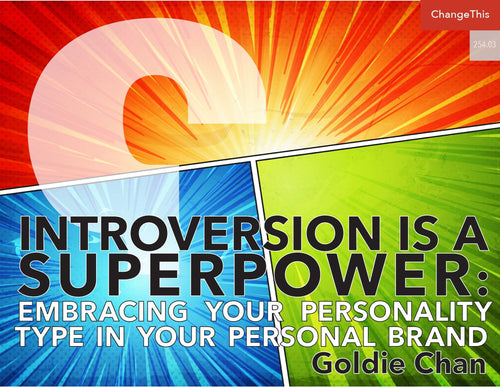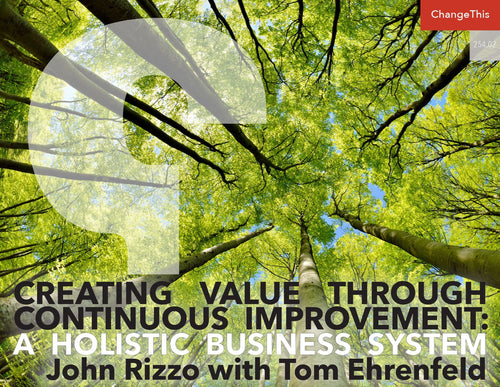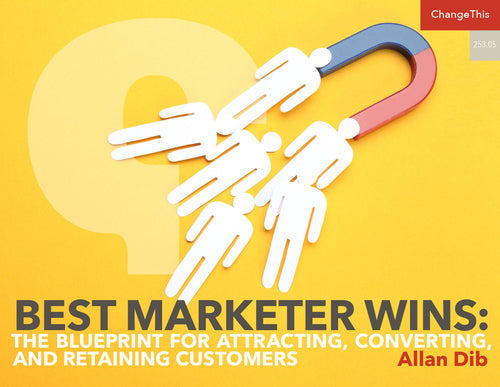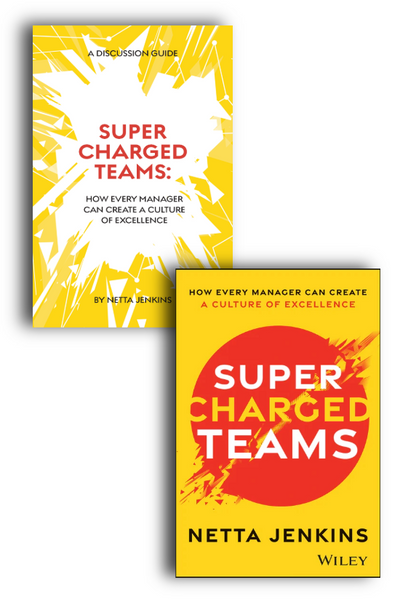A Broader Definition of We
Far too many organizations proudly claim inclusion through slogans yet fail to do the work to achieve the stated goal.
Many organizations released statements of solidarity with the Black Lives Matter movement, which was encouraging. But I remain skeptical. Words alone do not affect change. Saying what you think your customers, employees, and the public want to hear is different than building the internal infrastructure that would make places more diverse and genuinely inclusive.
For foundational progress to occur, we need leaders to build an internal infrastructure— to accumulate real-life experience interacting with people who are different on a trusted colleague basis. Until that is achieved, no slick slogan or public relations mission statement is going to make a measurable difference.
Any objective measure of minority representation in the workplace reveals that words are not enough. The data is indisputable. In her excellent book, Diversity, Inc., Pamela Newkirk closely examines real metrics. She writes, “Despite decades of handwringing costly initiatives, and uncomfortable conversations, progress in most elite American institutions has been negligible.” To be sure, there are specific pockets of progress, but overall, the evidence is clear that we have not succeeded.
A solid internal infrastructure can lead to a genuinely inclusive WE culture. Without it, there is no opportunity for self-reflection when problems occur. Instead of looking inward, folks will look outward and point the finger of blame at others. It’s like claiming on your website that your building is ADA compliant without building any ramps. Then, when someone using a wheelchair shows up, you blame them for expecting the fair access that you advertised.
The process of building a more inclusive infrastructure needs to happen on an internal basis throughout America’s institutions. Building WE cultures means interacting face-to-face with people who are different than you until you have built a trusted colleague relationship. Then you keep repeating this process with more and more people. Don’t stop. Don’t stop even when you realize that your intergroup anxiety is no longer triggered. Don’t stop when you achieve benchmarks or are praised for your progress. Don’t stop because there will always be gaps to close and your effort to keep building an internal infrastructure will make you a more interesting, successful, and empathic person. It will also make the world a better place.
I’ve watched thousands of professionals take on this challenge. It can be done. I’ve supported many by suggesting small gestures to begin the process. I’ve experienced this myself when I worked to bridge myriad gaps in both my personal and professional life.
FACE OF AMERICA
In a rare example of a home team leader recognizing and naming the lack of diversity as a serious economic problem in the United States, prior to the Black Lives Matter protests, former CEO of PGA of America, Pete Bevacqua, advocated for fundamental change by suggesting that golf must become more accessible and diverse in order to stay relevant in the future. “I think we would all agree, or most of us would agree, that the face of this game has to change if it’s going to grow. It needs to look more like the face of America.”
Pete Bevacqua was born onto the American “home team” as a straight, white man. There is no fault in this: Straight white men are not the problem. The problem is any person on a home team who acts like they have no advantage and does nothing to bridge Us and Them gaps.
Alexis Ohanian, co-founder of Reddit, is another straight white male who not only recognized his advantages but took action in response to Black Lives Matter protests. In addition to making supportive statements, Ohanian resigned from the Reddit board and asked the company to replace him with a Black candidate. He also committed to ongoing financial contributions to serve the Black community. Ohanian encouraged others to consider big change saying, “We need diversity at the highest levels of business now more than ever.”
When people in the majority like Pete Bevacqua and Alexis Ohanian advocate for foundational change in an institution by broadening the identity of who “belongs,” they are deliberately using their home team advantage to build a WE culture. This is an action any leader can take, but it is particularly effective when these actions are performed by leaders who identify with the home team in their organizations.
As our demographics continue to diversify, all businesses and corporations need to advance toward a broader definition of WE in order to look more like “the face of America.” It is in every organization’s economic interest because it will avoid costly problems and help them stay relevant. It is also the right thing to do.
NEW PARADIGM
Developing a WE culture is an ongoing process. Don’t wait for a catastrophe to force you into taking action. Take action now.
1. Look for Us and Them gaps. The old paradigm had many of us thinking that when we talked about ‘culture difference’ we meant differences between countries and languages. To be sure, these differences remain, but the gaps can reside anywhere people come together and may be related to differences in age, race, ethnicity, or any factor of identity.
2. Increase awareness of marginalizing behaviors, especially if you identify with the home team. Estimates place the cost of corporate diversity efforts in the billions, yet there has been little measurable progress when it comes to the number of nonwhite people in positions of power in corporate America. One reason for this is that home team players do not fully and deeply understand the experience of being a minority. The lived experience of many home team people prevents them from seeing that marginalizing behaviors perpetuate pernicious Us and Them gaps.
3. Ask for input from marginalized voices. When you do not have the lived experience of being a minority it is important to educate yourself and increase your own understanding. But no amount of study and listening can translate into knowing what it is like to live and work as a minority. Getting honest input from trusted people who represent voices different from your own is a foundational requirement for any organization.
As our demographics continue to diversify, all businesses and corporations need to advance toward a broader definition of WE in order to look more like “the face of America.”
4. Make a deliberate effort to move toward trusted colleague status with individuals from historically marginalized groups. So often, well-meaning home team people establish acquaintance level or colleague level relationships and then stop doing the work to move forward to trusted colleague level status. There are many reasons for this failure, including limited time, uncertainty, and privilege, but none is sufficient justification for not taking action. Make this a priority.
5. Notice when behavior seems unusual to you. Instead of immediately reacting to experiences in which another person or group behaves in a way that seems out of the ordinary to you, be prepared to pause and consider culture difference. Ask yourself, “Is there invisible data that explain this behavior that I’m not considering?” The simple act of pausing to seek information requires awareness, patience and curiosity—all freely available resources.
6. Be sensitive and aware when a person from outside the cultural majority is present. Notice language, race, ethnicity, religion and other differences. A new paradigm for inclusion requires that we overcome an outdated ‘color-blind’ approach. The new model requires that attention be paid to topics like race, ethnicity, and religion. Solutions to narrowing any Us versus Them gap will only arise when dominant cultural groups reconcile their role in longstanding narratives of exclusion and this starts with seeing, not ignoring, difference.
7. Assume there is cultural data you cannot see and seek to find it. Cultural data such as beliefs, values, and assumptions circulate around us like the air we breathe, informing choices we make on conscious and unconscious levels. Rather than waiting for a crisis to trigger reflection, assume that there is invisible and meaningful information around you at all times, just waiting to be seen.
8. Build your own internal infrastructure. Build your knowledge and firsthand experience with a person or group with whom you have a cultural difference, whether that gap is related to differences in generations, race, sexual orientation, nationality or any factor of identity.
9. Become Culturally Fluid. Over time, accumulate insights and first-hand experiences with a group you don’t identify as being a part of. Then repeat.
10. Inspire others to become WE-builders. Utilize your position of authority to provide encouragement and support to others in their own journeys toward building understanding and firsthand experience.
MINDSET
In April 2020, Daniel O’Day, chairman and chief executive of Gilead, an American pharmaceutical company, shared a statement that put the immediate pandemic as well as the ongoing global condition into perspective. At the time, Gilead was a leading organization working to test and manufacture more of the drug remdesivir, a possible treatment for Covid-19. Remdesivir, an anti-viral drug, was initially developed as a treatment for Ebola and is made from rare substances with limited global availability. “It will be essential for countries to work together to create enough supply for people all over the world and we look forward to these collaborative efforts.”
It’s not location that determines behavior; it is intention. A person can fly halfway around the world and still have an Us versus Them mindset. It is time for a new paradigm that rejects fear-based behaviors like building walls, limiting tourist buses, and increasing law enforcement. These protectionist behaviors are not a viable long-term solution because we are too deeply interconnected to survive without one another.
The simple questions each leader must answer are these: Are you trying to limit or broaden the definition of who belongs? Are you seeking connection or perpetuating division? Are your choices highlighting shared factors or fanning flames of division? We answer these important questions with our own behavioral choices in every encounter, every meeting, and with every decision we make.
SMALL UTOPIAS
During the unsettled time of the Covid-19 pandemic, I observed the creation of many “small utopias,” a phrase conceived by author Sheryll Cashin in her book Loving. She describes them as “places open to all, with new norms for inclusion, where people can build trust and be culturally dexterous.” Cultural dexterity is a concept she describes as “an enhanced capacity for intimate connections with people outside one’s own tribe, for seeing and accepting difference rather than demanding assimilation to an unspoken norm of whiteness.”
The scientific community became a small utopia, working across different languages and nationalities and abandoning competitive practices like keeping laboratory findings to themselves. Instead, researchers immediately shared important laboratory findings so that other scientists around the world could access the data.
THE FUTURE
Whether you are a business owner or a leader in a multinational conglomerate, if you really care about succeeding in the future you will prioritize WE-building as though your organizations depend on it. The multitudes who took to the streets in Black Live Matter protests all over the country and around the world is evidence that people—many types of people—will no longer accept outdated, unjust conditions.
The world is a fundamentally different place as a result of the Covid-19 pandemic and the protests. We should take the positive lessons from these experiences with us as we move forward and navigate our diverse and deeply interconnected economy.
A WE mindset offers access to an untapped resource right in front of us. The gaps between any Us versus Them dynamic in the workplace represent underutilized energy, innovation, and productivity. With committed leadership, this time can be an opportunity to work through many Us versus Them gaps in order to create small utopias with new norms for inclusion, where people can build trust and develop intimate connections with people outside their own tribe.
Will there be meaningful and measurable change? None of us really knows how this is going to play out in the years and decades ahead. Many factors will inform the choices leaders make that will impact financial markets, social structures, and individual wellbeing. What I know for sure is that maintaining the status quo will no longer work and will leave us ill-prepared for the future ahead.
Here’s the thing: Many of us already have what we need to change the trajectory away from division and toward connection. The most important requirements to establish a new paradigm in which diversity is valued and people have the skills to build connection across any differences are free and available to anyone—the willingness to be both genuine and humble and the desire to close gaps. It is possible to move forward toward a truly integrated culture in which only inconsequential Us and Them dynamics remain. Working together, I believe in a path toward which consequential and game-changing Us versus Them gaps no longer exist, where there is only WE.
I hope to meet you there.
Taken from The Business of We by Laura Kriska Copyright © 2021 by Laura Kriska.
Used by permission of HarperCollins Leadership
www.harpercollinsleadership.com.
ABOUT THE AUTHOR
Laura Kriska is a leading cross-cultural consultant with more than thirty years of experience bridging Us versus Them gaps in diverse workplaces. She has worked with Fortune 500 companies on four continents helping thousands of professionals build trust across differences based on nationality, ethnicity, race, religion, age or any factor of identity. Her WE-building framework provides practical and actionable insights for creating a more inclusive and productive world.
Born in Tokyo, raised in Ohio and now residing in NYC, Laura Kriska is considered an authority on cultural integration and regularly speaks to groups around the globe. She was the first American woman to work in Honda Motor Company’s Tokyo headquarters. This experience is the basis of her first book The Accidental Office Lady.
Her simple 3-step WE-building process has been utilized by a wide range of organizations in industries including manufacturing, finance, energy, biotech, electronics, entertainment and auto racing. By leveraging virtual technology, she has streamlined her methodology to have an immediate and positive impact using minimal time and resources. Contact her at laurakriska.com to learn how you can begin WE-building today.











































